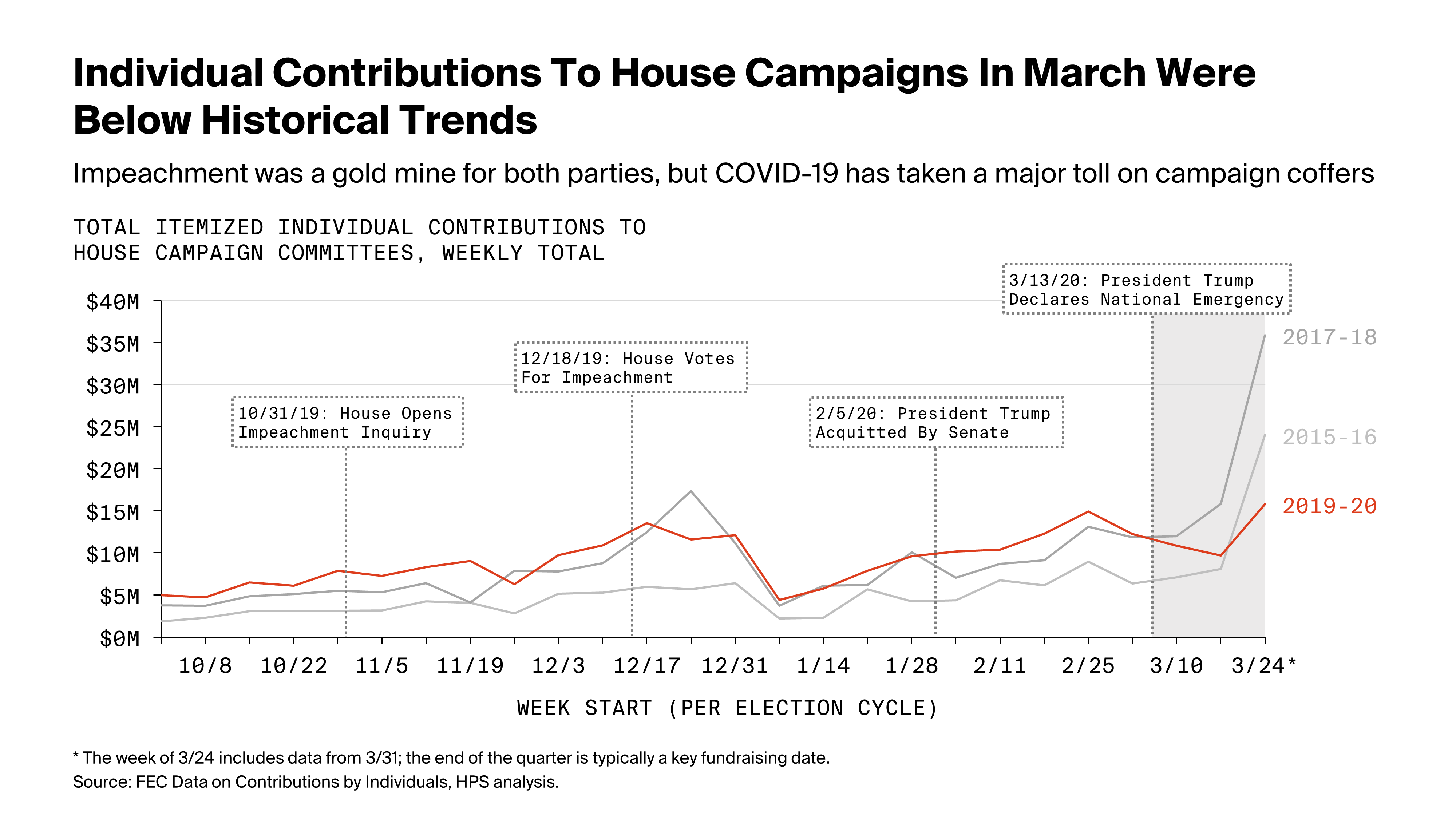The COVID Effect On House Campaign Fundraising
By: Lloyd Miller, lmiller@hamiltonps.com, 202-822-1205
After several strong months of fundraising for House candidates in both political parties the novel coronavirus cratered fundraising in March. During the first month of our national quarantine, individual contributions to House candidates dropped 35% compared to 2018.
Impeachment was, in fact, very good for fundraising. The U.S. House of Representatives spent last October debating impeachment before voting to open an impeachment inquiry on October 31. After a long November of hearings, the House voted on December 18 to impeach President Trump. Many candidates, both incumbents and challengers, used the House vote to boost their fundraising, in what Politico described as “a gold mine — turning even some rank-and-file lawmakers into fundraising juggernauts.”
House campaigns this cycle drew big hauls when the House was in the heart of their impeachment debate and hearings, raising considerably more in October (+30%) and November (+33%) from itemized individual donors as compared to the same months in 2017.
On February 5, 2020 the president was acquitted by the U.S. Senate, leading to another blockbuster fundraising month for candidates in both parties. In February 2018, House candidates raised $36 million from individuals, but in 2020 that jumped by 29% to $46 million (candidates also had one extra day in February to raise money, netting an extra $2 million on leap day). The party committees charged with electing members to the House, the Democratic Congressional Campaign Committee and the National Republican Campaign Committee, also raked in individual contributions in February, when the DCCC and NRCC saw a combined 63% increase in contributions over January.
Then came March. March 2020 will be remembered as the month that never ended. Almost every day felt like a new earth-shaking event, from the stock market crash to Tom Hanks getting coronavirus to a national emergency declaration and nationwide shutdown orders. There was no avoiding this impact for House candidates either as in-person fundraising ceased, donors started holding onto their cash, and attention was focused elsewhere. The result was a spectacular drop-off in fundraising. In March 2018, House candidates raised $80 million from individuals, but in 2020, they raised just $53 million, a 35% dropoff.

But it got even worse as the month continued. The end of a quarter is always a huge moment for fundraising, as anyone who ever signed up (or got signed up) for a campaign email list is all too aware. From March 16 through 31, 2018, House candidates raised $53 million, 38% of all itemized contributions to House campaigns for the entire first quarter. This year, however, there was no surge. House candidates could have expected to raise over $60 million from individuals in the final two weeks of March based on donor patterns over the previous two cycles, and yet they raised just $27 million.
Fundraising has started to adapt to the new normal. Campaigns are not that different from startups, nimble and willing to experiment to find an edge. Joe Biden hosted an online fundraiser, joined by California Gov. Gavin Newsom, that netted $2.7 million. President Trump’s campaign is selling campaign puzzles, a popular stay-at-home purchase, to raise money online. From guided meditation with a Congressman to Zoom calls with celebrities to Cinco de Mayo happy hours, candidates are adapting to the new normal, while acknowledging that many donors are keeping their wallets closed, at least for now.